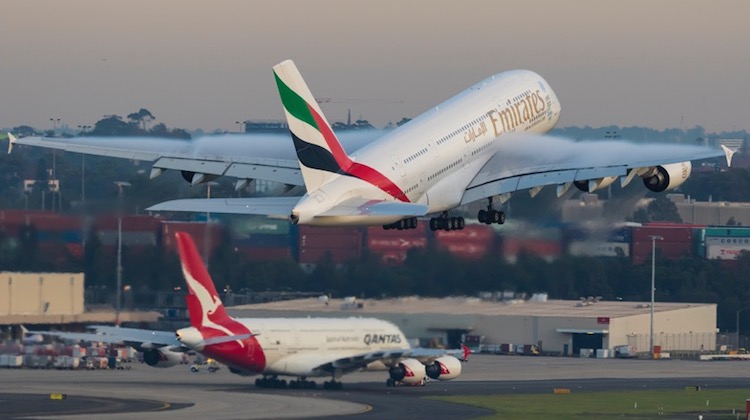
Qantas chief executive Alan Joyce says there is a strong case for the airline’s global alliance with Emirates to be extended given the “huge benefits” experienced by passengers over the past five years.
It was announced on Thursday the two carriers will shortly submit an application to the Australian Competition and Consumer Commission (ACCC) to renew a partnership that began in 2013 and led to Qantas rerouting its services to London Heathrow via Emirates’ Dubai hub rather than Singapore.
While there was strong support from government, airports and tourism organisations at the time, some in the aviation sector expressed concerns the alliance would result in higher ticket prices and an increase the pair’s market power on trans-Tasman routes.
In the end, the ACCC approved the alliance for a five-year period, rather than for 10 years as the two airlines were seeking, and placed conditions on maintaining capacity on some trans-Tasman routes.
Joyce said on Thursday the application to the ACCC for reauthorisation would highlight the consumer benefits to have resulted from the Qantas and Emirates joint-network over the past five years.
“We do believe that on the basis of what’s happened in the last five years we think we have a got a really strong case,” Joyce told reporters during a conference call on Thursday.
“You never take the regulator for granted, you have to make that case, you can’t be complacent and you need to show them the benefits that the consumers have gotten.
“The partnership has given huge benefits to a lot of customers, it’s opened up a lot more options for customers and it continues to do it with this.”
The Qantas chief executive noted Qantas frequent flyer bookings on Emirates flights in premium classes had risen 42 per cent in the past year, with the Dubai-based carrier the Flying Kangaroo’s biggest redemption partner internationally.
Their joint network covers 109 destinations across, Australia, New Zealand, Asia, Europe, the Middle East and Africa.
Further, the number of Qantas passengers travelling to Europe on the airline’s QF airline code had risen to 1.2 million a year since the Emirates partnership started, compared with 400,000 passengers a year previously.
And on the Emirates side, figures from Qantas showed there was an average of 10,000 Emirates passengers flying on its domestic and regional services within Australia each month. The figure was as high as 20,000 a month at peak times of the year.
Qantas also announced on Thursday it would end flights to Dubai by shifting its Sydney-Dubai-London Heathrow service to operate via Singapore instead from late March. The airline had announced previously its Melbourne-Dubai-London Heathrow service was also ending in favour of Melbourne-Perth-London Heathrow routing.
“Emirates altogether get 1.6 million passengers from Qantas on their entire network. They know that’s really valuable, that brings them a lot of revenue,” Joyce said.
“We get a network into Europe that we can operate comfortably, we know that’s valuable, our customers love it.”
Virgin Australia has an alliance with Abu Dhabi-based Etihad Airways and Singapore Airlines (SIA) that offer connections through to Europe via the Middle East or Asia.










